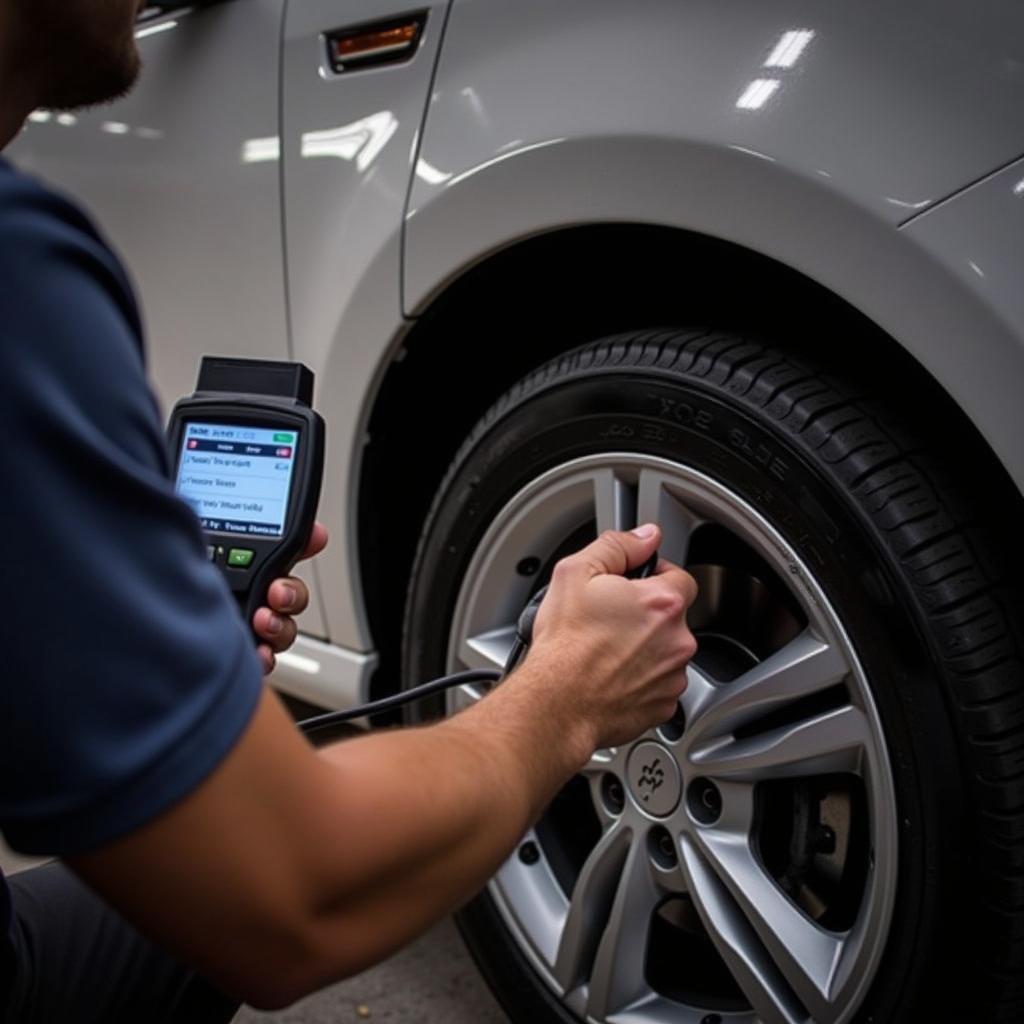Knowing how to clear a code with OBD2 is a valuable skill for any car owner. An OBD2 scanner, short for On-Board Diagnostics, is a powerful tool that allows you to communicate with your car’s computer and diagnose issues. When your car detects a problem, it logs a Diagnostic Trouble Code (DTC) or “check engine light code” in its system. While the check engine light illuminating on your dashboard can be alarming, understanding how to clear these codes, and when it’s appropriate to do so, can save you time and money.
This comprehensive guide will walk you through the process of clearing codes using an OBD2 scanner, explain when you should and shouldn’t clear codes, and answer common questions about OBD2 code clearing.
Understanding OBD2 Codes and Why We Clear Them
Before we delve into the steps, let’s understand what OBD2 codes are and why we might want to clear them. When your car’s onboard computer detects a problem with a sensor, component, or system, it generates a specific code. These codes are standardized, meaning a “P0420” code indicates the same problem across most car makes and models.
We clear codes for several reasons:
- After fixing the underlying issue: Once you’ve repaired the problem that triggered the check engine light, you’ll need to clear the code to turn off the light and reset the system.
- To confirm a repair: Clearing codes allows you to see if the repair successfully addressed the issue. If the code reappears, further diagnosis is necessary.
- To clear intermittent codes: Sometimes, temporary glitches can trigger codes. Clearing these can help determine if the problem was a one-time occurrence.
 Mechanic Clearing OBD2 Codes
Mechanic Clearing OBD2 Codes
How to Clear a Code With OBD2: A Step-by-Step Guide
Clearing codes with an OBD2 scanner is a straightforward process. Here’s a general guide, but always refer to your specific scanner’s instructions for detailed steps.
- Locate your OBD2 port: The OBD2 port is typically located under the driver’s side dashboard, often near the steering column.
- Connect your OBD2 scanner: Plug the scanner into the OBD2 port.
- Turn on the ignition: Turn your car’s ignition to the “on” position but don’t start the engine. This powers up the scanner and allows it to communicate with your car’s computer.
- Access the “Read Codes” function: Navigate your scanner’s menu to find the option to read stored codes. This might be labeled as “Read Codes,” “Retrieve Codes,” or something similar.
- View the codes: The scanner will display the stored trouble codes. Note these codes down for reference. You can research these codes online or use your scanner’s built-in code library to understand what they mean.
- Select “Clear Codes”: Once you’ve reviewed the codes, locate the “Clear Codes,” “Erase Codes,” or similar option within your scanner’s menu.
- Confirm the clearing process: The scanner will likely ask you to confirm that you want to clear the codes. Double-check that you’ve noted the codes and then confirm.
- Verify code clearance: After the clearing process is complete, try reading the codes again. If successfully cleared, no codes should appear.
When Should You Not Clear OBD2 Codes?
While clearing codes can be helpful, there are situations where it’s not advisable:
- Before an emissions test: Clearing codes right before an emissions test can reset the vehicle’s readiness monitors, potentially leading to a failed test.
- Without addressing the root cause: If you haven’t fixed the underlying mechanical problem, clearing the codes will only provide a temporary solution. The check engine light will return, and the issue might worsen.
- During active diagnosis: Mechanics often rely on stored codes to diagnose problems accurately. Clearing them mid-diagnosis can complicate the process.
“Clearing codes without understanding their meaning is like hitting the snooze button on your car’s warning system,” says automotive expert, Sarah Jones. “You might silence the alert temporarily, but you’re ignoring a potential problem that could escalate.”
FAQs about Clearing OBD2 Codes
Here are answers to some frequently asked questions about clearing codes with an OBD2 scanner:
Will disconnecting the battery clear codes?
While disconnecting the battery can sometimes clear codes, it’s not a reliable method. It can also reset other vehicle settings.
Can any OBD2 scanner clear codes?
Basic OBD2 scanners might only read codes, while more advanced ones allow clearing. Check your scanner’s features.
Is it legal to clear OBD2 codes?
It’s legal to clear codes for troubleshooting purposes. However, tampering with emissions-related components or intentionally clearing codes to pass an emissions test is illegal.
Why does my check engine light come back on after clearing codes?
If the underlying problem hasn’t been addressed, the check engine light will reappear when the car’s computer detects the issue again.
How often should I clear my car’s codes?
Ideally, you should only clear codes after confirming and repairing the problem that triggered them.
Conclusion
Learning how to clear a code with OBD2 puts you in control of your car’s diagnostics. Remember, clearing codes is only part of the solution. Use this guide responsibly, diagnose problems accurately, and address the root causes to keep your car running smoothly.
Need help clearing codes or diagnosing a car problem? Contact our expert team via WhatsApp at +1(641)206-8880 or email us at [email protected]. We’re available 24/7 to assist you!
